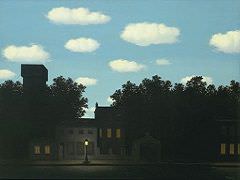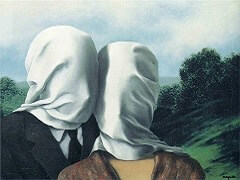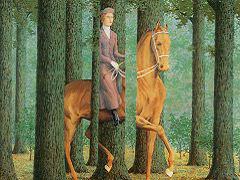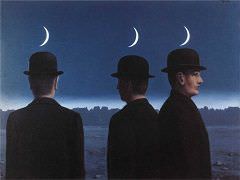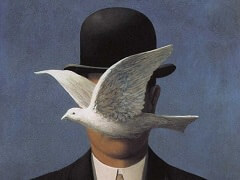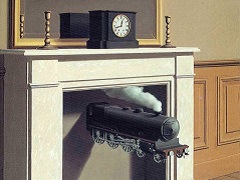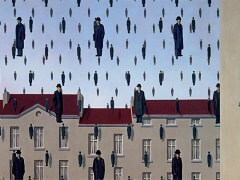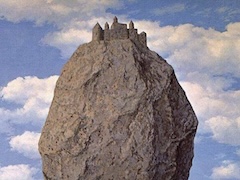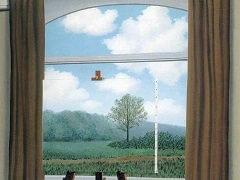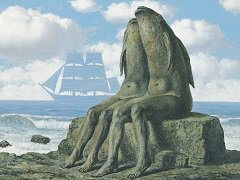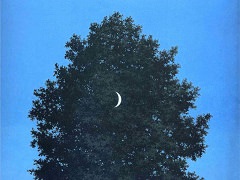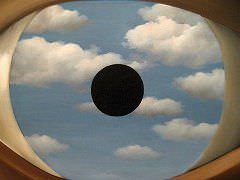Homesickness, 1940 by Rene Magritte
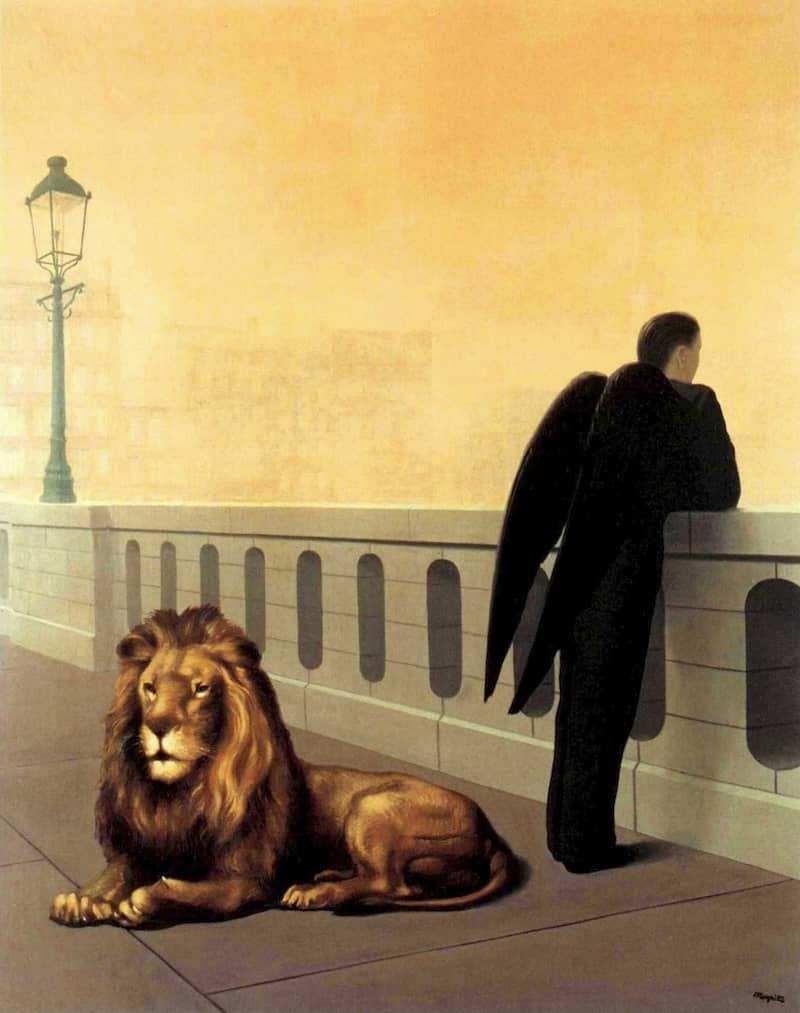
Magritte originally thought of calling this 1940 painting Menopause (a period of depression) but his final title is Le Mal du Pays (Homesickness).
This is clearly one of Magritte's most emotionally honest paintings and instead of giving the painting one of his whimsical surreal titles like "Waiting for the Pea-Souper" (a title proposed by one of his friends that Rene considered but rejected), he chose the title that reflected how he felt...how he was lost...how he wished he could go home.
In May 1940 his home was invaded by the Nazi during World War II and Magritte fled with his close friends Paul Eluard and Scutenaire. It would be easy to assume then that this painting was about the German occupation of Belgium and Magritte's homesickness about having to flee the country he loved. Certainly this is an emotional component of the painting but there's much more.
The yearning for home is one of the strongest human desires. Home for many people represents safety or freedom from concern, of being a child again- protected by your parents. Home is a place you belong and with every fiber of your being you wish you could return. By returning to your earliest thoughts, to the womb, you could escape the fears and torments of life. Magritte, as we all do had this powerful yearning for home. His home life was not easy- in fact he didn't want to talk about it. He moved frequently with his two brothers when he was very young. Then when he was just 13 his mother committed suicide, drowning herself in the Sambre River. As a child becoming a young man, this was not easy.
Magritte's father died in 1928 of diabetes leaving Rene without parents. He was alone except for his loving wife, Georgette. They were living in the suburbs of Paris at the time. Soon they too would become homesick and and after a three year sojourn to Paris, the Magritte's came home to Brussels where they could be near their remaining family members.
Six or seven years later Rene Magritte's life started to change. Leaving his happy home in Brussels, he went on his trips to London to visit Edward James and ELT Mesens to prepare for his exhibitions. During that time Rene became involved with the young surrealist model known as the "Surrealist Phantom" of 1936, the artist Sheila Legg, who posed for surrealist events with Salvador Dali and others and was one of the most photographed surrealist woman at the time. According to one source: "Magritte, in fact, fell in love with her." Magritte did not want to hurt Georgette or arouse her suspicions, so he arranged for his friend, Paul Colinet (1898-1957) a Belgian surrealist poet, to spend time with Georgette so she would be safe... a little too safe as it turned out. While Magritte was away Georgette and Paul Colinet became romantically involved. Georgette at one point asked Rene for a divorce.
So Rene Magritte fled Brussels and his marital problems for France in May 1940, five days after German troops invaded Belgium and Holland. Georgette did not go with him. Rene spent three months in Carcassonne, France, with Paul Eluard and Scutenaire.
The painting Homesickness features a forlorn Magritte as an angel leaning over a bridge contemplating the river, perhaps thinking of suicide. Magritte had the courage and honesty to paint himself, on the edge... on the brink of catastrophe. He was losing the two things he most valued in his life...his wife Georgette and his home.
The lion is hard to overlook. Curiously the "king of the jungle" is not threatening or menacing and looks away disinterested. Clearly the lion represents Georgette, and perhaps Magritte never understood this himself. The two are separated, not interested in each other, while Magritte contemplates his sorrow and pain.


